SMART CITIES
- Introduction
What should the cities of tomorrow look like?
They will be greener, eco-designed, sustainable and connected.
There are some projects that show the transformations that will to be done:
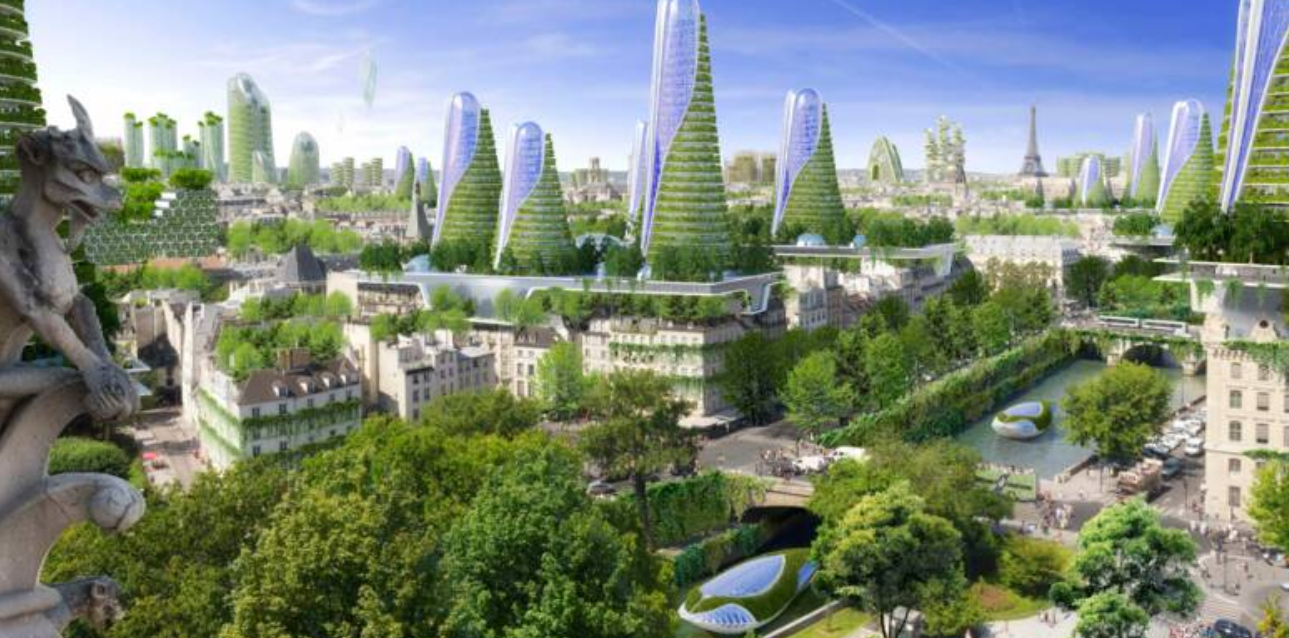
Paris 2050
- Big issues and solutions
To limit CO2 emissions, transport must be redesigned, fewer cars and fewer deliveries.
Currently, agricultural areas are far from cities where most consumers are located; it is possible to build vertical farms within the city to shorten the distribution circuit as much as possible. Example, an urban farm in the Manhattan island of NYC:
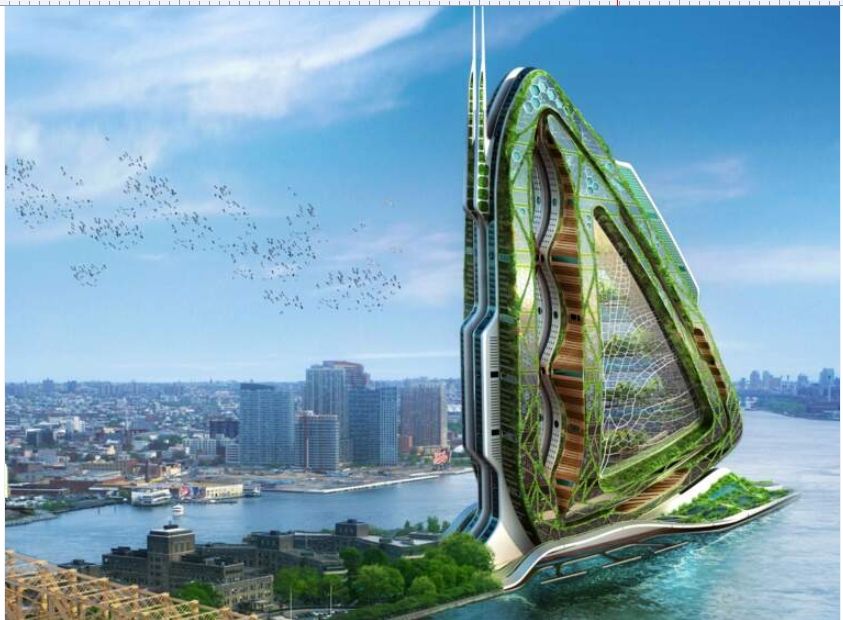
This prototype of an urban farm will be located between the island of Manhattan and the district of Queens; these two 575 meter high towers in the shape of a dragonfly's wing are linked together by a large bioclimatic greenhouse. Inside housing, offices and research laboratories, urban vegetable gardens and organic farming fields. Recycling of wastewater and waste, renewable energies will be among the integrated ecological devices.
Hyperions, the vegetable towers of India
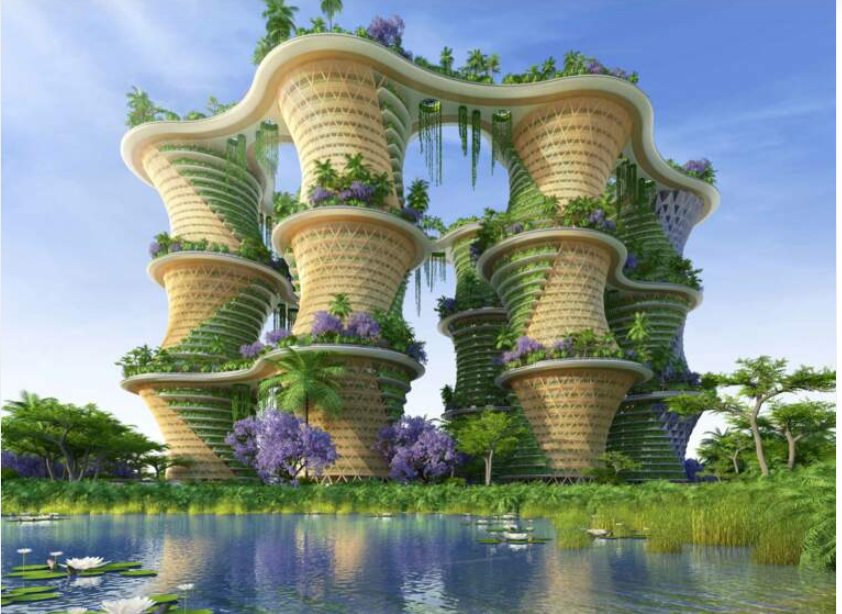
In Jaypee Sports City, a city near New Delhi in India, this structure is made of 6 tree-towers of 36 floors, including housing and offices, built in sustainable wood (the foundations are in steel-concrete). Inside, a natural air conditioning system ensures stable temperatures without using electricity. A large vegetable roof is located on the top and all apartments have a balcony for growing vegetables. Water is recycled and photovoltaic and thermal solar on the towers make the building energy self-sufficient.
- To be sustainable, cities or even buildings can become self-sufficient in energy through the use of green energy and suitable materials. Examples:
This residential tower in Taipei (Taiwan)
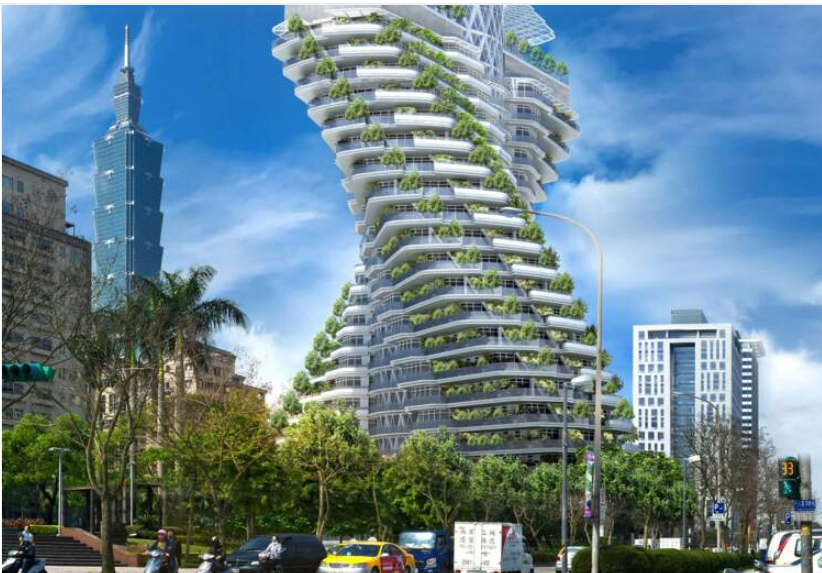
This residential tower in Taipei (Taiwan) is inspired by the double helix structure of DNA.
To give the tower a 90° twist from its base, the architect chose to offset each floor by 4.5 degrees from the next. Rising 20 stories, there are 40 luxury apartments, with green balconies, a swimming pool, fitness center and rooftop terraces. 23,000 trees are planted, absorbing up to 130 tonnes of CO2 each year.
Lilypad, a floating eco-city
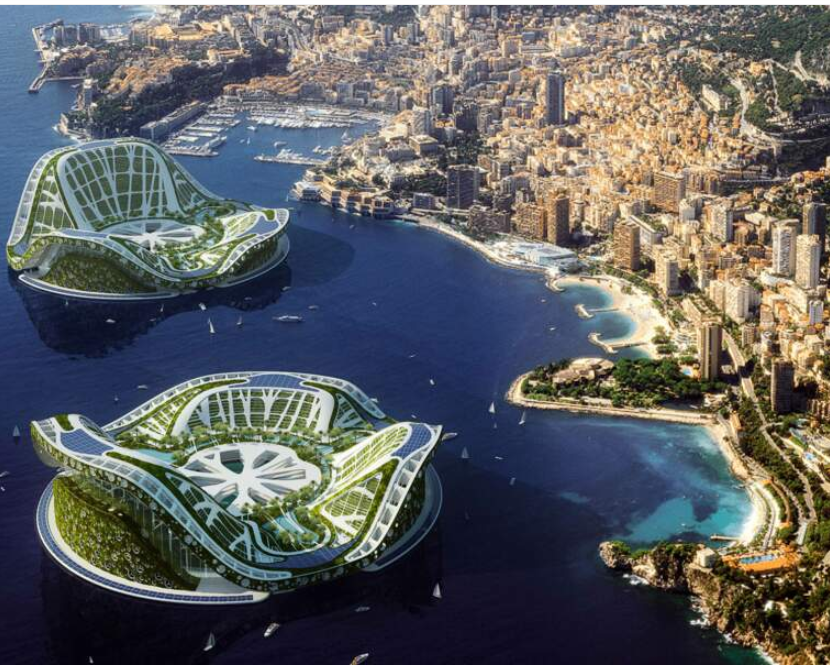
Lilypad is inspired by the leaf of a giant Amazonian water lily. Three “mountains” (dedicated respectively to work, shopping and leisure) are covered with housing, laid out as hanging gardens, with balconies for the cultivation of an organic vegetable garden. In the center, a lagoon collects and purifies rainwater. Moving with the ocean currents, the city produces more energy than it consumes thanks to these solar, wind, hydraulic, biomass installations...
Tour & Taxis, an eco-district in Brussels
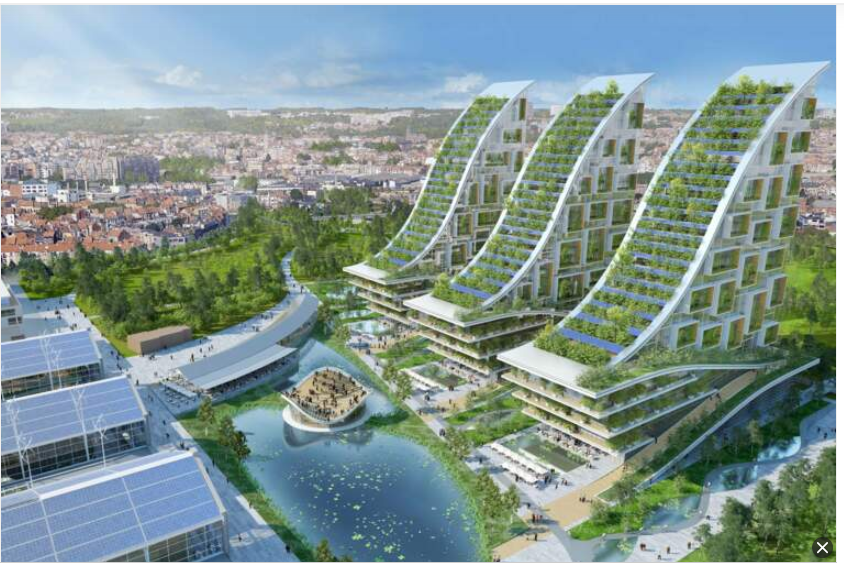
Tour & Taxi is a former warehouse and office complex located north of the city center of Brussels. The project involves the construction of three “vertical forests” (above right): 85,000 m3 of housing combining individual houses, private vegetable gardens, inspired by nature and relying on renewable energies.
- To be connected, connectivity and the Internet of Things (IOT) bring efficiencies in services to make cities work smarter.
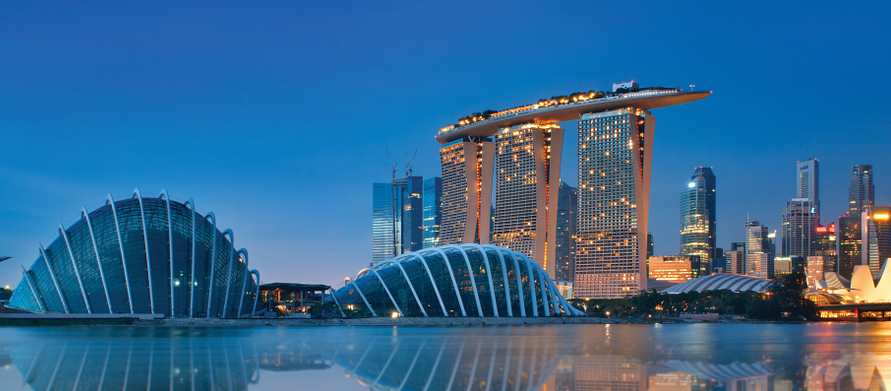
Singapore city
What makes a city smart? Generally, it requires intelligent IoT solutions that optimize infrastructure. Sensors, networks, and applications collect data on energy usage, traffic volume, pollution levels, and other topics which are then analyzed and used to correct and predict usage. Making that data available to everyone through open-access systems allow citizens and businesses to leverage ( exploiter) that information for their own purposes.
Apps that show traffic volume in real time, for instance, allow drivers and pedestrians to better plan travel routes and adapt.
Dozens of applications are already available in each of the developing areas. Real-time crime mapping, for instance, helps in policing; telemedicine brings health practitioners into patients’ homes; digital tracking of waste receptacles tells a garbage hauler ( transporteur d’ordures) when a can is full; online connection platforms provide internet access or battery charging for personal devices. The list goes on.
Singapore the southeast Asia city-state is the world’s second most densely populated, with some 8,000 people per square kilometer. Faced with an aging population, the government is looking to digital advancements to raise productivity in an already advanced economy. Its Smart Nation vision aims to digitally collect information from throughout the city using sensors linked to aggregation boxes. Data collected on traffic volume or pedestrian activity is sent to appropriate agencies for analysis and action in delivering services.
Smart technologies are integrated into housing through a framework ( cadre de developpement) that considers planning, environment, buildings, and living. For instance, engineers analyze wind flow, solar penetration, and shaded areas to better design and site new buildings. By 2022, the government plans to implement intelligent, energy-efficient lighting for all public roads, and have solar panels installed on rooftops of 6,000 buildings.
Created with the Personal Edition of HelpNDoc: Full-featured multi-format Help generator